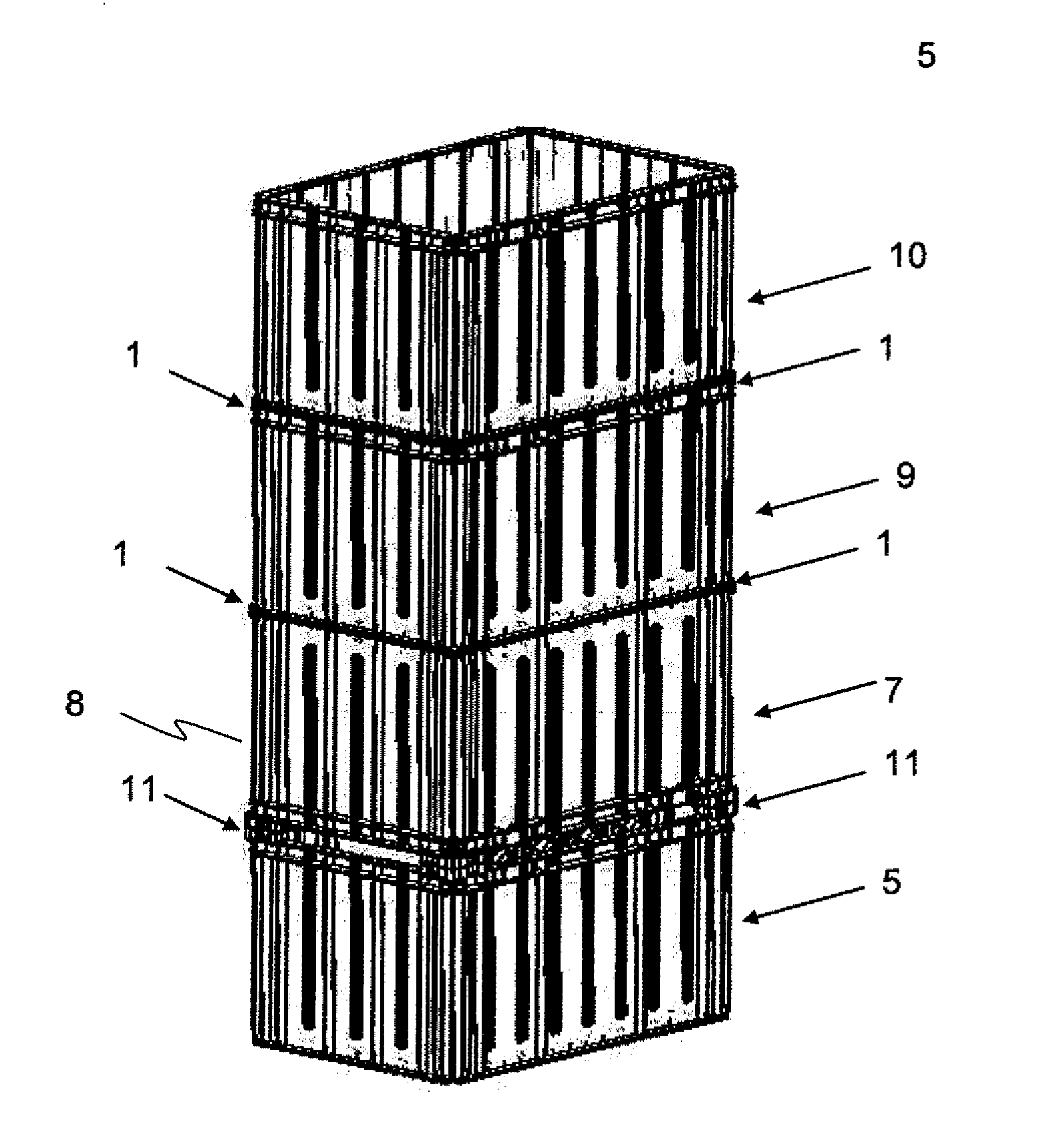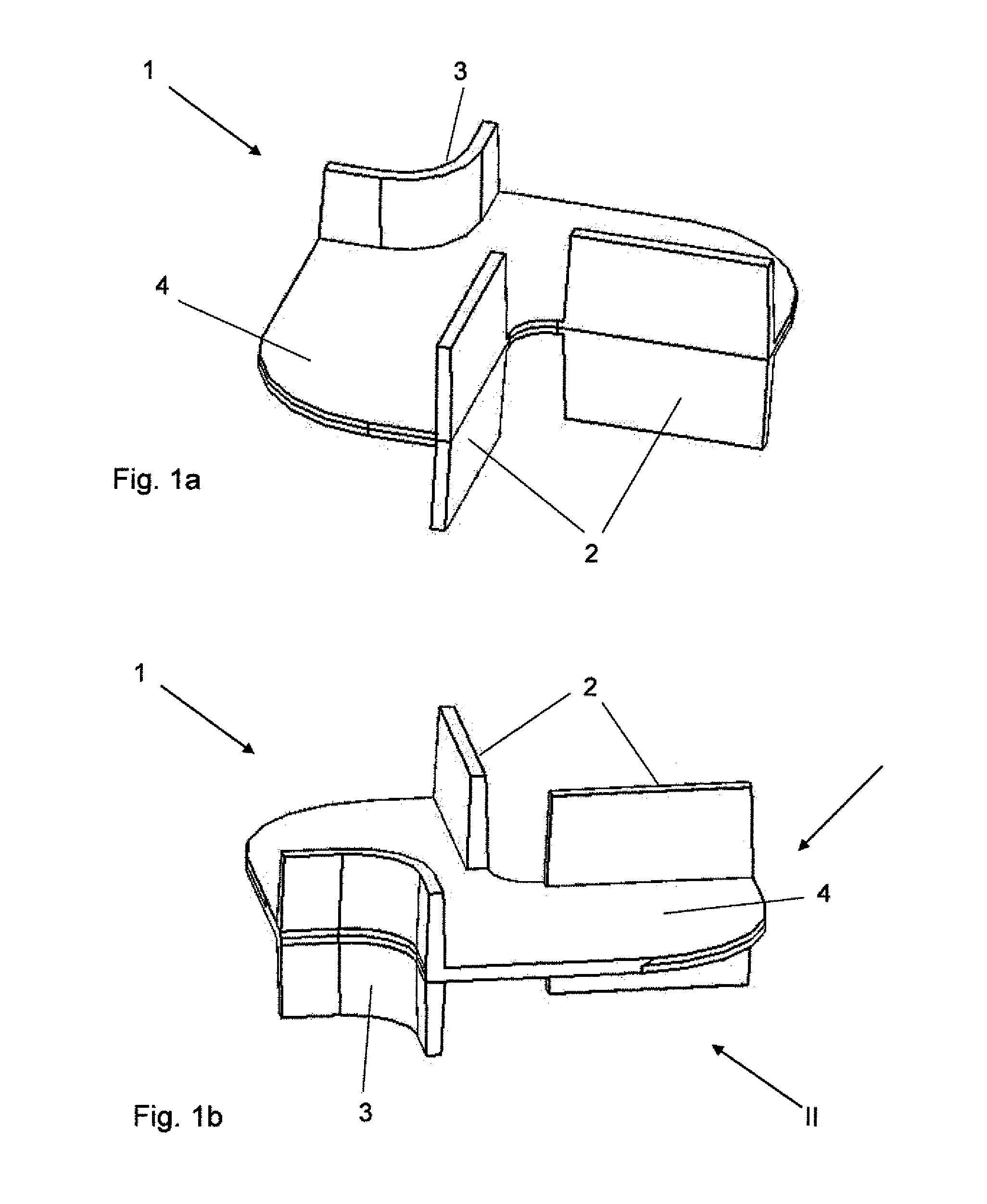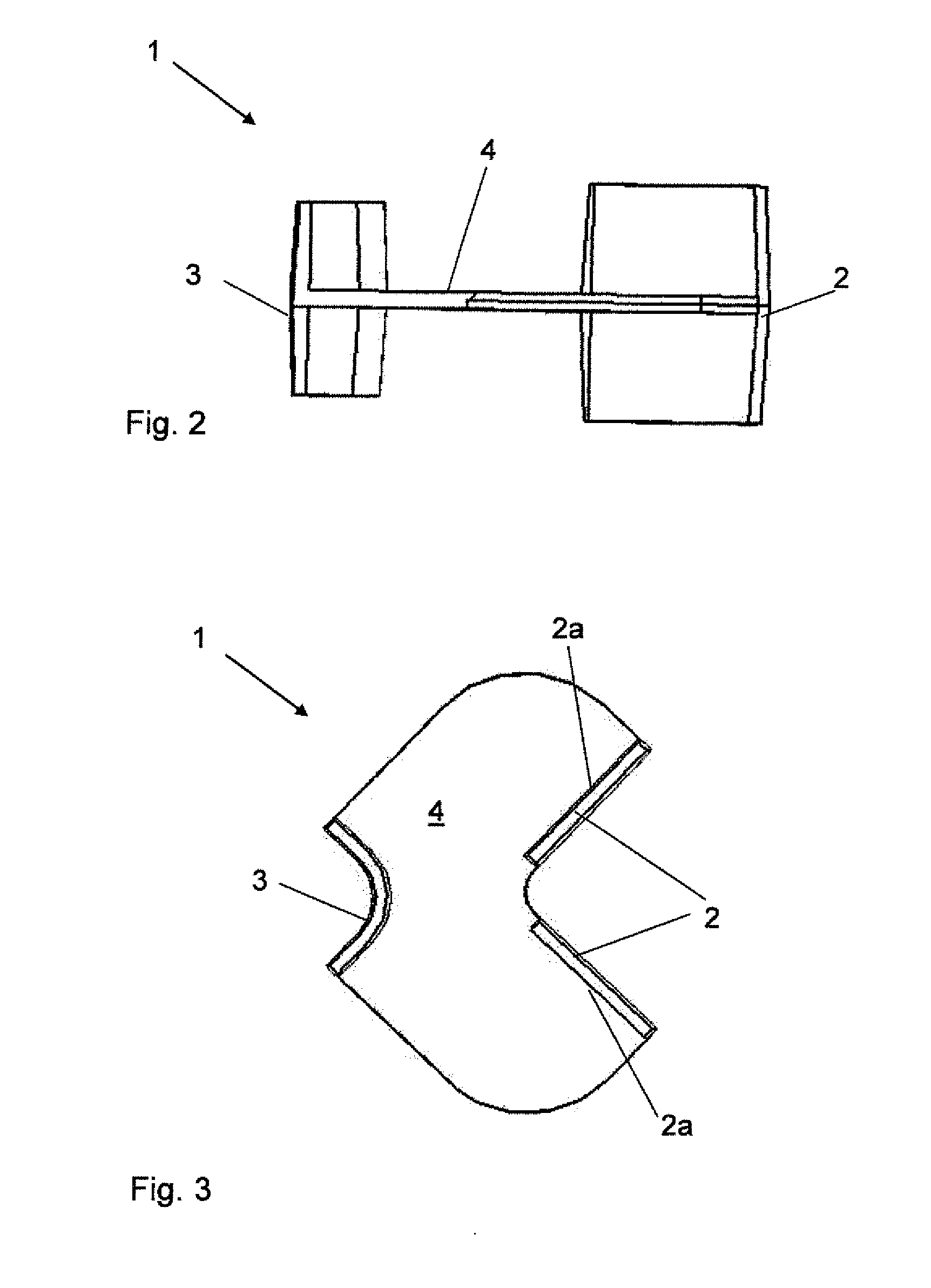Device for orienting a stack of containers
a technology for cuboid containers and devices, which is applied in the direction of container/bottle construction, rigid containers, dismountable cabinets, etc., can solve the problem of more difficult stacking, and achieve the effect of stable vertical stacking of such containers
- Summary
- Abstract
- Description
- Claims
- Application Information
AI Technical Summary
Benefits of technology
Problems solved by technology
Method used
Image
Examples
Embodiment Construction
[0046]Throughout all the Figures, same or corresponding elements are generally indicated by same reference numerals. These depicted embodiments are to be understood as illustrative of the invention and not as limiting in any way. It should also be understood that the drawings are not necessarily to scale and that the embodiments are sometimes illustrated by graphic symbols, phantom lines, diagrammatic representations and fragmentary views. In certain instances, details which are not necessary for an understanding of the present invention or which render other details difficult to perceive may have been omitted.
[0047]Turning now to the drawing, and in particular to FIGS. 1a and 1b, there is shown an example of the fixing element 1 according to the invention of a first embodiment for vertical orientation of square shaped containers. The first sidewalls 2 and the second sidewalls 3 are shown which are all vertically oriented and interconnected by a flat connecting element 4. The connec...
PUM
 Login to View More
Login to View More Abstract
Description
Claims
Application Information
 Login to View More
Login to View More - R&D
- Intellectual Property
- Life Sciences
- Materials
- Tech Scout
- Unparalleled Data Quality
- Higher Quality Content
- 60% Fewer Hallucinations
Browse by: Latest US Patents, China's latest patents, Technical Efficacy Thesaurus, Application Domain, Technology Topic, Popular Technical Reports.
© 2025 PatSnap. All rights reserved.Legal|Privacy policy|Modern Slavery Act Transparency Statement|Sitemap|About US| Contact US: help@patsnap.com



